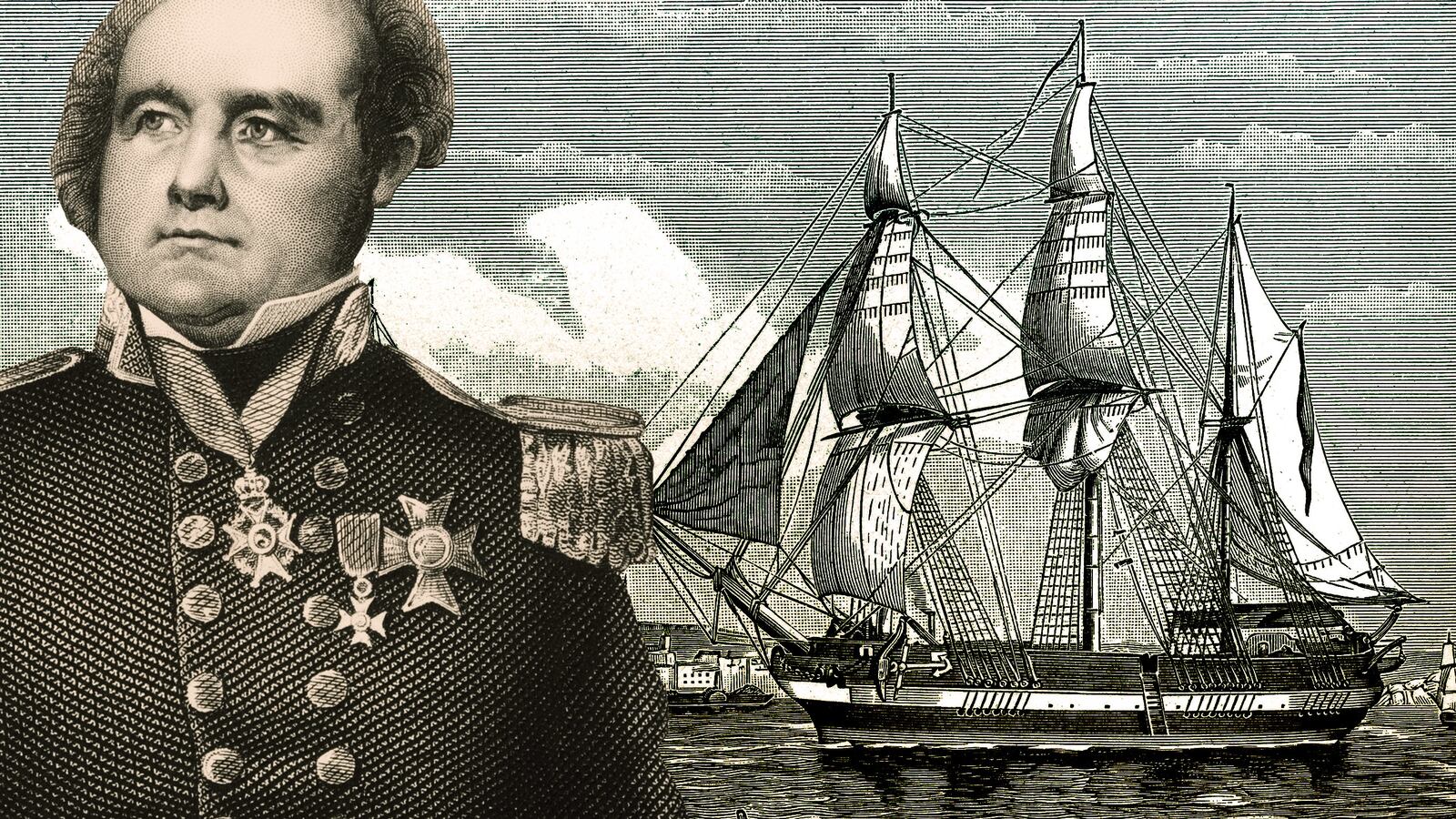It’s estimated that, beneath Earth’s waters, 3 million undiscovered shipwrecks exist. And right now, all across the planet, the locations of a select few of these lost ships are actively being sought.
Some of these expeditions are publicly sanctioned by governments and others are privately funded by organizations, foundations, or like Bill Paxton’s character in the Titanic, greedy bastards. However, the public curiosity surrounding theses expeditions’s searches and/or findings are greater than one might think. Not only is the internet overloaded with sites and blogs dedicated to covering news and updates regarding the hunts for shipwrecks, but books, YouTube fare, and podcasts about the subject are also rather easy to find. Moreover, once a upon a time, both National Geographic Channel and Discovery Channel aired reality programming which followed the adventures of teams of people who get their adrenaline kicks searching the open seas for sunken vessels and their lost treasures of shiny shit. Obviously, for many of us, there’s just something about shipwrecks—maybe the history or the treasure or the mystery—that we find fascinating.
Last week was a good week for shipwreck aficionados. According to a small group of smart, overachieving explorers from the Arctic Research Foundation, a 19th century shipwreck has been found. According to The Guardian, on Sept 3, the ARF found Sir John Franklin’s long-lost, second ship, the HMS Terror, at the bottom of an Arctic bay.
Now, this news might not seem like a big deal to those of us who do most of our exploration on Netflix or Amazon or those of us who, right now, are thinking, who the hell is Sir John Franklin? However, for the 10 people who discovered HMS Terror and spent more than a week capturing video and photographs of the Terror’s “perfect” condition, finding this underwater historical treasure was, at least for them, the discovery of a lifetime.
Unfortunately, their under-the-sea adventure didn’t include the discovery of riches; their treasure will be found in the solving of the 168-year-old mystery surrounding Franklin’s doomed quest to navigate the unchartered sections of the Northwest Passage—a shipping route through the Arctic Ocean connecting the Atlantic and Pacific Oceans. The demise of Franklin’s pursuit has confounded historians, archeologists, and seafaring adventurers for decades. Often considered the most disastrous event in exploration history, amid Franklin’s fourth—and final—Arctic voyage, 129 crew members (including Franklin) lost their lives when the Terror, along with the mission’s flagship, the HMS Erebus—became icebound in the frozen waters of Canada’s Terror Bay.
What’s perhaps most fascinating about the Terror’s discovery and what might inspire adventurers of all kinds to take up shipwreck hunting as a hobby was how researchers ended up locating the ship. As NPR tells it, one of the explorers overheard an Intuit man—an Arctic local—talking about that time six years prior when he’d seen what appeared to be a wooden masthead sticking out of the ice near Terror Bay. Though the man had snapped a picture, he never told anybody about his finding because he’d lost his camera and considered that to be bad luck. Still, even without photo proof, the researcher believed the man’s story and the team ended up finding the Terror almost exactly where the man claimed to have seen it.
Now, of course, the chances of finding a lost shipwreck, especially one with gold and silver or, at the very least, one that the general public finds interesting, are pretty slim. But that’s not for the lack of lost vessels. If the estimate is correct, there are at least 2,999,999 shipwrecks still sitting on the ocean floor waiting to be found. Moreover, among these sunken boats, historians believe there’s billions of dollars in gold, silver, and other treasure to be found (though in most cases the finders don’t get to be the keepers).
But just in case this Arctic tale of Terror has inspired your inner pirate to take up searching the deep blue sea for lost ships (and maybe some loot to boot), here’s a list of just a few of the world’s most famous shipwrecks yet to be found.
The Merchant Royal
Treasure hunters have been searching for years for the Merchant Royal, also known as the “Eldorado of the Sea.” This British sailing ship that went down near the Isles of Scilly during a violent storm in 1641 is believed to be loaded down with unimaginable riches. As one of the more well known shipwrecks, under-the-sea hunters have invested years into seeking out the location of this near 400-year-old wreckage. According to historians, the Merchant Royal’s treasure includes “gold, silver, and bullion estimated to be worth hundreds of millions in today’s prices.” Some believe its worth could surpass $1 billion.
SS Baychimo
Lovers of ghost stories might find this lost ship to be especially of interest. Constructed in Sweden in 1914 and owned by a German shipping company until the start of World War I, the SS Baychimo was a 1,322 ton vessel powered by steam. After being purchased by The Hudson’s Bay Company, the boat made voyages across the North Atlantic from Scotland as well as frequent trips to Alaska and British Columbia. In 1931, while en route to Vancouver, the frigid untamed waters of the North Pacific proved too strong for Baychimo, leaving its crew no choice but to evacuate. However, according to legend, the Swedish-built ship didn’t exactly sink. Over the course of the next 38 years, there were a countless number of Baychimo sightings from captains, Inuits, and fisherman. Some of these reports suggested the ship was moving along quite well, seemingly unmanned. Other stories include threads of failed attempts by sailors to board the ship. After more than 20 years without a sighting, leading most to believe it had finally sunk, an Intuit crew claim to have seen Baychimo drifting along the Beaufort Sea coastline. The last sighting happened in 1969. As of 2006, the officials in Alaska renewed their interest in finding the so-called ghost ship. So far, it’s location is still unknown.
Santa Maria
If the name Santa Maria sounds vaguely familiar, it should, since its one of the triad of boats—the Nina, Pinta, and the Santa Maria—that Christopher Columbus used in 1492 when he “discovered” the New World. Over the course of his career, Columbus lost nearly a dozen ships to the sea’s violent side; but by far, the Santa Maria was his most famous loss. Though the Nina and Pinta both made voyages home to Spain, the infamous explorer’s flagship, on Christmas Eve, 1492, ran aground into a coral reef off the coast of modern Haiti. It sank the following day. Though several oceanic salvagers have claimed to have found Columbus’s ill-fated boat, their findings have all been proven false. The Santa Maria is still believed to be on the floor of the Caribbean Sea, somewhere off the coast of Haiti.
The Griffin
In 1679, the Griffin became the first ship to sail the Great Lakes. It was built by Rene-Robert Cavelier, Sieur de La Salle, a French explorer who used the ship to survey the Niagara River, Lake Erie, Lake Huron, and Lake Michigan. However, in September of 1679, while on its maiden journey, the ship vanished. Countless theories exist as to what happened to the Griffin—from native attacks to violent storms—but no proof for any of the theories exist. Considered by many to be the “holy grail of Great Lakes shipwrecks,” all attempts at locating La Salle’s craft have either failed or their findings have been proven false. While a handful of theories suggest that La Salle’s boat might be in Lake Erie or Lake Huron, a majority of under water archeologists believe the Griffin is located on the seafloor of Lake Michigan. So, you should probably start there.
Flor del la Mar
Built in 1502, the Flor del la Mar (Flower of the Sea) was a 400 ton Portuguese carrack. Not only was the Flower of the Sea quite instrumental in helping Portugal during the Battle of Diu and its capture of Malacca, the Flower is best known for its dramatic sinking. During the fall of 1511, while navigating the Strait of Malacca, a violent storm not only shipwrecked the Flower off the coast of Sumatra, it split the boat in to two pieces. At the time of its sinking, the Flower was loaded down with what historians consider the largest, most elaborate treasure ever lost at sea, including gold goblets, silver plate, and gold bullion galore.






